The aim of the article was to explore the role, collaboration and activities of volunteers involved in disaster prevention and firefighting throughout Mongolia, and to identify ways to further increase their participation. In this study, the possibility of increasing voluntary participation in natural disaster prevention activities was considered in 6 sub-districts: Khalkh Gol, Dashbalbar, and Herlen in the Dornod province, which are located in the high-risk zone of forest and field fires, and Sainshand, Airag and Zamin Uud in the Dornogobi, which are located in the group of low risk. A total of 56 employees were surveyed and the results were processed using the SPSS-20 program.
Keywords: Volunteering, Volunteering, Fire, Wildfire, Capacity, Training
In recent years, within the framework of civil society organizations and the private sector of Mongolia, volunteer activities have been activated within the framework of social development, poverty reduction, increased employment, protection of children's and women's rights, public health, environment and prevention of natural disasters.
The Center for Voluntary Actions, the Metropolitan Youth Voluntary Center, and the Fire Voluntary Section were created and operated.
A voluntary organization is a private and non-governmental organization with a clear legal status, permanent activities, non-profit, self-governing, membership, participation and donation procedures based on voluntary principles. People who donate their time and knowledge for the benefit of others without any compensation are called volunteers.
Voluntary actions are actions performed by a person without any reward in order to help other people and local organizations.
This activity has benefits such as long-term planned social participation that will benefit any community and organization, helping others without any monetary incentive, and a willingness to participate in any necessary tasks of one's own free will.
According to the United Nations, volunteering is defined by the following basic characteristics. It includes:
- There is no purpose of making profit or loss.
- Free choice based on the person's heart and desires.
- Being useful to others or society.
In this sense, volunteering is a constant need of society. Since the state does not have the ability to fully meet the needs of every industry and sector of society with its own regulation and services, civil society organizations and public organizations fill this gap. However, citizens have little general understanding of volunteer disaster organizations and volunteers, especially the coordination and structure of volunteers who volunteer to help in disaster response activities, and the roles of volunteer coordinators, managers and leaders are unclear.
Voluntary actions are social actions in civil society, such as sudden voluntary actions of citizens to help people affected by natural disasters, such as floods, earthquakes, forest fires, or activities of civil society organizations.
Types and role of volunteering in natural disaster
According to international and our experience, volunteers who have undergone training for managing natural disasters (volunteer units and groups), are divided into as volunteers of non-governmental organizations, people who participate in volunteer activities of their own free will, volunteers from the private sector, international volunteers, related to volunteers and online volunteer. There are two main volunteer structures: membership and service.
Table 1
Types of activities of voluntary organizations
|
Activity |
Activity level |
Based organization |
|
International |
National |
Non-Governmental Organization |
|
National |
Provincial and Local |
Private Sector and Social Responsibility |
|
Online |
Volunteering is considered on both a membership and service-basis structure. The membership-based structure could be a local membership group or section such as the Mongolian Red Cross Society, Mongolian Trade Union, Mongolian Youth Association, etc., to meet local needs. The membership-based model is more common in volunteer movements.
A service-based structure is similar to standard human resource management or employee hiring practices. Volunteers who contribute to the achievement of service goals are selected according to the job description and may be included in other programs of non-governmental organizations. They can also be trained in non-vocational disaster preparedness.
To enhance disaster response, non-governmental organizations can be replaced by volunteers trained in disaster response at the local or regional level. Also, after assessing the disaster situation and determining the need for assistance, local volunteers and local residents who come of their own free will are registered and hired as volunteers under the service model.
Coordinating volunteer disaster management is an important task in disaster and emergency management. This should be a component of disaster management at all levels. To provide disaster help, non-government organizations mobilize volunteers during disasters (at the beginning of natural disasters or after it). Volunteers trained in disaster management may perform duties under the supervision of professional emergency management personnel in the following areas. It includes:
— Search and rescue;
— Distribution of basic necessities;
— Relocation of affected people;
— Search for lost people and transfer them to families and relatives.
Within the framework of the legal regulation of the prevention of natural disasters, in article 4.1.18 of the Law on Prevention of Natural Disasters of Mongolia, the «volunteer part» of Mongolia is defined as citizens who have undergone appropriate training to participate in activities for the prevention of natural disasters on a voluntary basis, and in article 22.7 of the law, «groups and units» and the committee can create voluntary units for the protection of natural disasters on the basis of the local population», in article 36 of the law defines in detail the rights and obligations of voluntary units for the protection of natural disasters. These provisions of the law determine the legal regulation and norms of activities of volunteers during natural disasters, as well as a number of provisions of the Sendai document — an international political document on the participation of citizens, communities and volunteers in activities to reduce the risk of natural disasters. In addition, the order of the Deputy Prime Minister of Mongolia No. 34 of 2016 approved «Uniform procedures for voluntary actions to prevent natural disasters». This provision provides for the increase of voluntary participation in events to reduce the risk of natural disasters, large registration, streamlining of activities and creation of a certain degree of legal basis. The purpose of this regulation is to regulate the main directions, principles, organization, financing, requirements, rights, obligations, training, practice and social support of volunteers for protection from natural disasters, and also for participation in operations after natural disasters.
Within the framework of the aforementioned legal document, local volunteer units for protection from natural disasters, communal groups of shepherds, forest communities and subdivisions for the use of pastures were created and operate, but training and preparation for protection from natural disasters, tools and personnel potential are weak.
Analysis of the current state of volunteerism and opportunities for further improvement
As part of the implementation of the Law on the Prevention of Natural Disasters of Mongolia, the Law on Fire Safety of Mongolia and the «National Program for Reducing the Risk of Natural Disasters with the Participation of the Public», 486 volunteer groups work at the national level, and 268 volunteer groups at the local level, a total of 4,876 volunteers.
There are also 117 volunteer firefighting units, 80 volunteer disaster prevention units, and 71 joint joint volunteer firefighting units and disaster protection units established by the order of the local governor.
In this study, a questionnaire survey was conducted to determine the readiness and potential of volunteers in activities for the prevention of natural disasters, including 57 volunteers from 6 units for protection from natural disasters and firefighting in the provinces of Dornod and Dornogovi, which are zones of high risk of forest fires.
In the Dashbalbar sub-district of the Dornod province, 15 citizens formed the «Volunteer Squad for the Prevention of Natural Disasters and Fires» according to the order of the Local Governor N A/37 and in the Khalkh Gol sub-district of the Dornod province, 15 people formed «Volunteer Squad for the Prevention of Natural Disasters and Fires» according to the order of the local Governor N А/28, as well as in the Herlen sub-district, 15 citizens formed the «Volunteer detachment for the prevention of natural disasters and extinguishing fires» according to the order of the Local Governor. In 2019, «Volunteer units for protection from natural disasters» of 10 people each were created in the Sainshands, Airags and Zamin Uud sub-districts of the Dornogovi province.
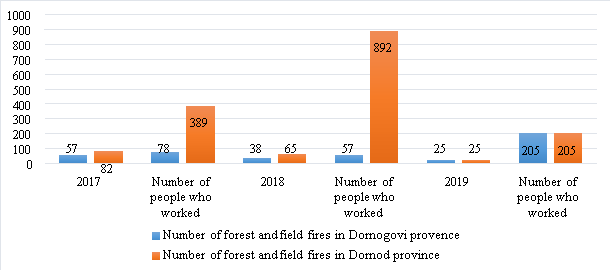
Fig. 1. Number of volunteers and number of fires in Dornogovi and Dornod provinces
The equipment and tools used by the volunteers of this area were considered «equipment and tools of the voluntary fire brigade». We conducted an assessment of the supply of firefighting equipment, instruments and equipment used by the volunteer fire brigade. This is stated in the appendix to the regulation «Use of voluntary fire formations», approved by order N A/346 of the Head of the General Office for Emergency Situations.
The provision of 20 types of equipment and tools, necessary to ensure the possibility of volunteer fire formation to perform their duties within the framework of the procedure «Acceptance of the work of voluntary fire formation» is estimated as 7.5 percent or extremely insufficient.
10.4 percent of respondents rated equipment and instruments as sufficient, and 33.3 percent rated them as insufficient. Among them, 70 % of employees gave an «insufficient» assessment of the adequacy of equipment for protection from natural disasters in the province of Dornogovi, and 46 % of members of the province of Dornod rated it as «insufficient».
When a total of 57 members of volunteer groups of 6 sub-districts, who participated in the study, were asked questions about the status and experience of working on emergency calls, the members of volunteer groups of 3 sub-districts in the Dornod province worked on calls more often than the participants of volunteer units of the Dornogovi province.
As can be seen from the following figure 2, depending on the difference in the number of fires that occurred in the provinces of Dornod and Dornogovi in the period from 2020 to 2021, the number of volunteers who worked on the call of these districts differs significantly.
As of 2020, the «Volunteer Fire Squad» has completed 188 calls in 6 sub-districts involved in the study, i.e. 3 sub-districts of the Eastern province, i.e. 5 times per person, and 3 sub-districts of Dornogovi province worked 9 times in total, or 1 person called 2–3 times.
As of 2020, the «Volunteer Fire Fighting Unit» of the 6 sub-districts involved in the study, i.e., 3 sub-districts of Dornod Province, worked on 188 calls, i.e. 5 times per person, and 3 sub-districts of Dornogovi Province worked a total of 9 times, or 1 person called 2–3 times.
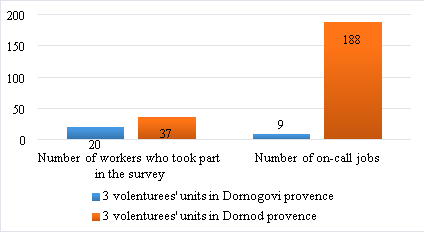
Fig. 2. Calls to emergency services and working condition of members of volunteer units of 6 sub-districts of Dornogovi and Dornod provinces
As seen in Figure 3, the high frequency of forest fires in 3 sub-districts of the Dornod province directly affects the work and command of volunteer units.
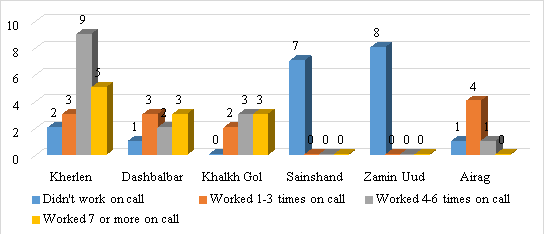
Fig. 3. Volunteers' on call status in Dornogobi, Dornod provences
Thus, 33.3 percent of 57 members who took part in the survey, or 19 members, have never worked to call emergency services, and 28 percent are volunteers in the Dornogovi province.
Taking into account the age and gender of the members of the volunteer group, 52 percent of the participants who took part in the survey are young people under the age of 30, which means that the participation of volunteers in activities for the prevention of natural disasters is good.
Table 2
Age status of volunteers
|
Age of Volunteers |
Age Distribution (%) |
|
Below 30 |
52 |
|
31–40 |
35,4 |
|
Over 41 |
12,6 |
Considering the status of participation in training, 85 percent of volunteers in 3 sub-districts in Dornogovi province and 60.7 percent of volunteers in Dornod province visited 1 or more training sessions.
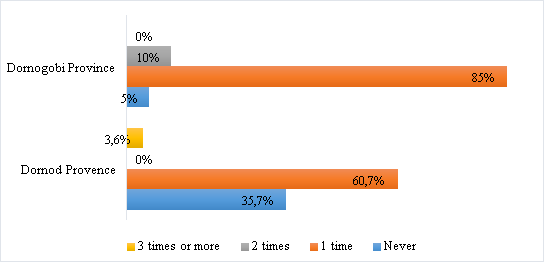
Fig. 4. Training of voluntary units of 6 sub-districts of Dornogovi and Dornod provinces
In the survey about the training necessary to increase the participation of volunteers for the prevention of natural disasters, 73 percent of respondents did not know or did not prioritize the necessary training, and 21 percent of them answered that they needed to undergo training on the topics «Fire training». «First medical care» and «Labor Safety» respectively.
It can be concluded that there is insufficient knowledge and skills to work in the most common dangerous situations, such as accidents or fires, and to participate in field events.
83 percent of the participants asked questions and identified problems in the voluntary sector, neither answered nor made concrete proposals.
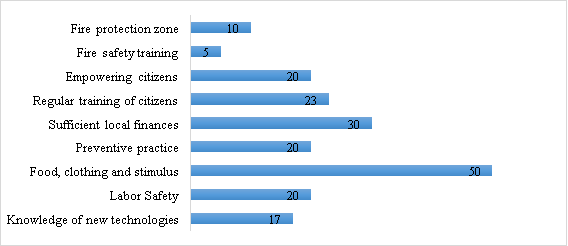
Fig. 5. Actual problems volunteers-activists
However, if the proposals received during the questionnaire survey are presented, it is necessary to take into account that out of 57 employees, who filled out the questionnaire, and among the volunteer employees who participated in the survey, 50 percent applied for «improvement and provision of food, wages and stimulated».
Volunteers is a wonderful resource that can make an invaluable contribution to the development of society. The Mongolian Disaster Prevention Law defines volunteers as citizens who have received appropriate training to participate in disaster prevention activities on a voluntary basis.
We analyzed the current state of volunteers from several sub-districts in the provinces of Dornogovi and Dornod, who participated in operations to provide assistance during natural disasters. The list of fire vehicles, tools and equipment in the volunteer fire brigade, specified in the appendix to the «Application of the voluntary fire brigade», is compared with the equipment, tools and participation of volunteers in these sub-districts, and the average value is obtained, as well as the training needs are determined.
On the basis of analysis of the current state of volunteer activity in the Dornogovi and Dornod provinces, it is necessary to implement the following measures:
— Integrate and improve the overall order of volunteer activities for the prevention of natural disasters with the order of work of the volunteer fire brigade;
— Determine the needs of training volunteers for protection from natural disasters, focus attention on improving quality and expanding opportunities.
— Improve the equipment of the voluntary detachment of protection from natural disasters, considering the extremely insufficient provision of means of individual protection.
References:
- Law on Disaster Protection of Mongolia. 2017;
- Law on Fire Safety of Mongolia. 2015;
- Legal status of the Mongolian Red cross society. 2016;
- Order N 24 of 2018 of the Deputy Prime Minister of Mongolia. «Common Procedures for Voluntary Activities for Disaster Prevention»;
- Order N 38 of 2018 of the Deputy Prime Minister of Mongolia. «Procedures for financing and providing incentives for the activities of the voluntary disaster protection unit»;
- Order N A/346 of 2015 of the Head of the General Office for Emergency Situations, «Regulations for the Operation of Volunteer Fire Fighting Units»;
- Common Procedures for Volunteering in Disaster Relief. Appendix to Order N 24 of 2018 of the Deputy Prime Minister of Mongolia;
- Procedures for operating a volunteer firefighting unit. Second Appendix of the Order N A/346 dated December 30, 2015 of the Head of the General Office of Emergency Situations;
- A Great dictionary of the mongolian language;
- Network of Mongolian Voluntary Organizations (NMVO), Voluntary Situation Assessment and Recommendations in Mongolia. Ulaanbaatar, 2012, pp. 10–11;
- Comparative study of the legal environment regulating voluntary activities //Department of Information, Monitoring, Analysis and Evaluation. Secretariat of the State Great Khural of Mongolia, Ulaanbaatar, 2017, p. 11.







